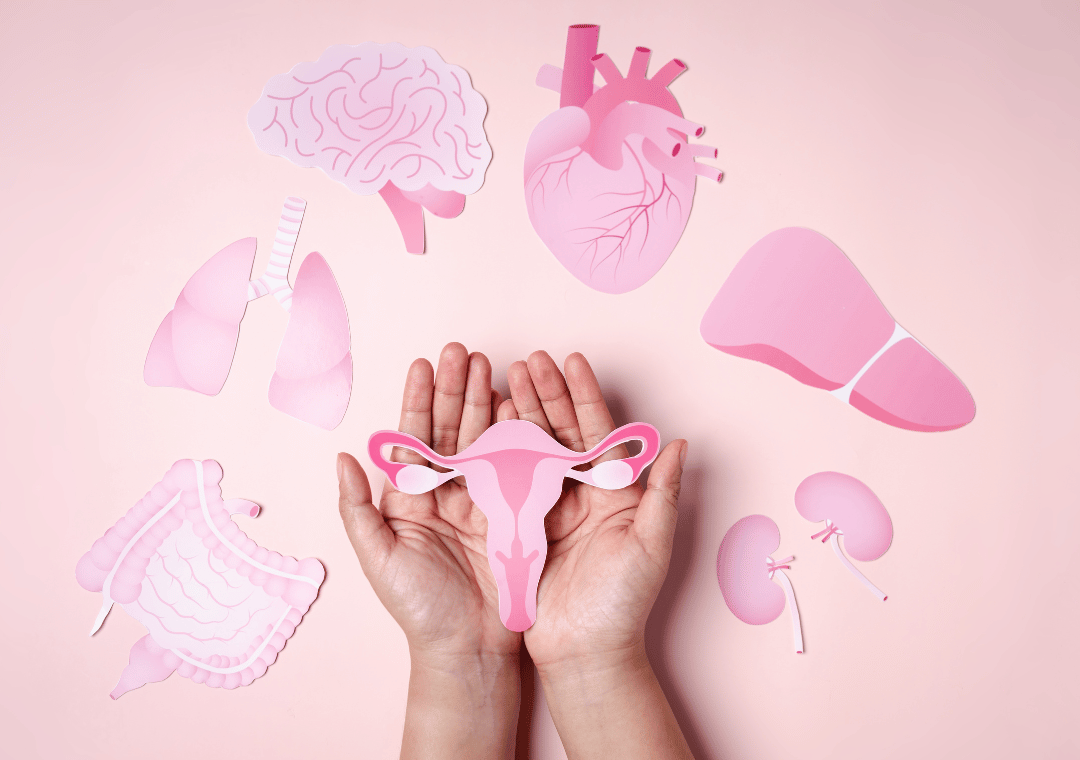Written by English Taylor
At BINTO, we get tons of questions about polycystic ovarian syndrome (PCOS). What is it? What are the symptoms? How can I manage PCOS through nutrition and supplements? Considering the reproductive and hormonal disorder affects one in 10 women of a childbearing age and five million women in the United States, it’s no wonder we get asked these great, relevant questions. Today, we’re going to talk specifically about PCOS diagnosis — the straightforward (and the not-so-straightforward) parts of how health pros assess whether or not a patient has PCOS.
Why learn about PCOS diagnosis, anyways? Well, for starters, this intel can help you know what to expect if you ever go doctor’s office to see if you have PCOS. Additionally, diagnosing PCOS has a lot to do with looking for certain symptoms. When you know the signs of PCOS, you’re better equipped to keep an eye out for them in your own body. And at the end of the day, information is power, whether it’s being used to help you become more aware of your own health or develop more understanding of what millions of women are experiencing.
What’s PCOS again?
So glad you asked. Though the underlying cause of PCOS is unknown, it’s believed to be rooted in hormonal imbalance, primarily insulin and androgens (male hormones like testosterone). Insulin helps your cells use sugar as an energy source. But if there’s too much insulin in your body, your cells can become resistant to it. If your cells become resistant to insulin and ignore it, then your blood sugar levels rise — insulin isn’t being used to help your cells absorb the sugar. When there’s excess sugar in your blood, your body might produce more insulin — making the whole thing worse.
And guess what excess insulin can lead to? Too many androgens. While it’s totally normal for women to have some male hormones, it’s important for them to be in balance with female hormones (like estrogen) and stay at certain levels. Female hormones enable reproductive functions like ovulation, menstruation, and implantation. Having excess androgens, however, can get in the way of these womanly processes. For example, too many androgens can cause difficulty with ovulation, leading to absent or irregular periods and fertility issues. Excess androgens can result in unusual facial and body hair growth and acne, too.
In a normal cycle, the an ovary develops multiple follicles (which house eggs). Ultimately, one follicle becomes dominant and matures an egg. This egg gets ovulated and is released into the fallopian tube to potentially get fertilized by a sperm. But if you’re not ovulating for a prolonged period of time due to excess androgens, it’s possible to develop cysts on your ovaries — hence the term “polycystic.” With PCOS, your ovaries develop follicles as they should, but the follicles can’t mature, produce, and release an egg for ovulation — the androgens are preventing them from doing their thing. As a result, these follicles kind of get “stuck” and become cysts. “Polycystic” translates to “many cysts.”
Now, let’s talk diagnosis
The Rotterdam criteria is used to diagnose PCOS. Fun fact: The Rotterdam criteria were developed in 2003 at an endocrinology conference in — you guessed it — Rotterdam, a city in the Netherlands.
To be diagnosed with PCOS, a woman must meet two of the following three criteria:
- Infrequent menstruation or anovulation (the latter is a fancy word for total absence of menstruation)
- Having signs or laboratory values of excess androgens
- Polycystic ovaries
But previously, the diagnosis for PCOS was much more strict. Prior to 2003, women had to test positive for all three criteria. As you might expect, this caused many to go undiagnosed. Unfortunately, the name “polycystic ovarian syndrome” can also be misleading and limiting because it only represents one of the above symptoms. It’s very important to keep in mind that PCOS typically means more than having polycystic ovaries.
But PCOS can be more complicated than simply meeting two out of the three Rotterdam criteria. After all, we’re are different — do five million women really fit perfectly into this box? Dr. Kristy Vermeulen, a San Francisco-based naturopathic doctor (ND) who specializes in treating hormone imbalance, thinks this is where current PCOS diagnosis can improve by being more fluid than the Rotterdam criteria. “A patient I’ve diagnosed with PCOS may ovulate every other month, not have polycystic ovaries, and isn’t showing high levels of androgens, but is having a tough time getting pregnant,” she says. “She only meets one Rotterdam criteria, but there are other factors, like infertility, I take into consideration.”
At the end of the day, it’s important to pay attention to your unique body and seek care from an expert — preferably a reproductive endocrinologist who specializes in hormones and PCOS — who listens, is willing to go the extra mile, and investigate factors beyond the Rotterdam criteria when it comes to diagnosis. Whether you currently have PCOS, suspect you might, or know someone who does, we hope this article gives you the information you desire, but most importantly, deserve about an important and prevalent women’s health issue.
Written by English Taylor. Women's health freelance writer and editor. English went to the University of Virginia undergrad and Northwestern for graduate school. She currently lives in the bay area but hails from Nashville (one of our favorite places!).

